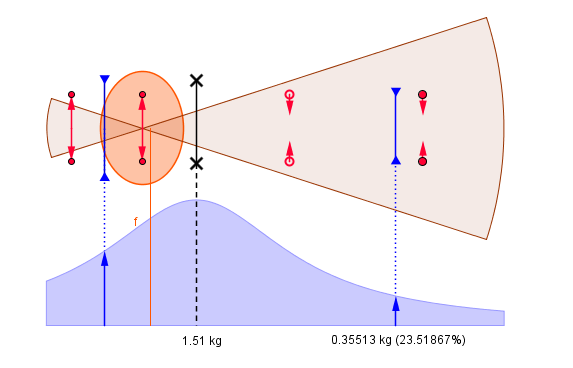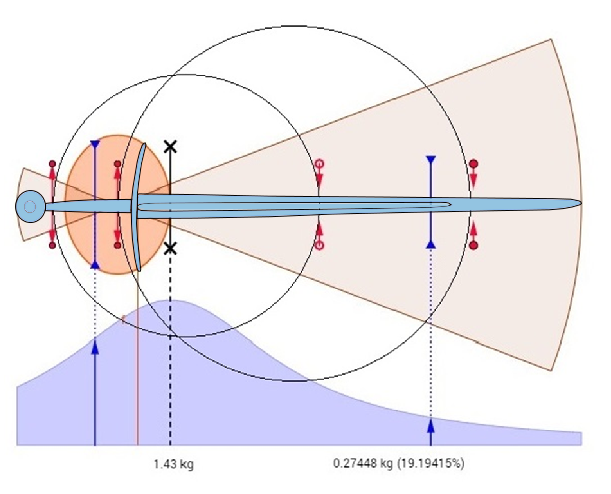Posts: 1,757 Location: Storvreta, Sweden
Fri 07 Oct, 2016 12:01 am
Being a newcomer to this discussion I must first say that I am very happy to see that this method for showing the dynamic properties of swords is focus for some interest.
The reason this specific tool cam into existence was a spin of from the exhibition "The Sword - Form & Thought" at the Deutsches Klingenmuseum, where I was part of the curatorial team.
Vincent and I had talked at rather irregular intervals over the years before this, and I knew he was the man for the task, when I wanted to include some sort of graphics to express the dynamic properties of the swords in the exhibition. I had long wanted to have a way to present the handling of swords in a way that did not favour one feature over another. I did not want a situation where you first of all would be looking for "The Best" but rather describe swords in a way that made objective comparison possible. Some visual signals that could give you some idea of the individual properties of different swords.
Vincent leChevalier is the wizard in all this. He is the man who worked out the mathematics.
I have gathered a body of data over the years and could contribute with my ignorance and lack of understanding. -If Vincent could show something in a graph that made sense to me, then surely it would make sense to others as well! :-)
I wanted to see the subtleties of sword dynamics expressed in Orc-speak, rather than Wizard-lingo.
The resulting graphs grew to be a rather complex combination of features, but I think that this is a good thing: it express the fact that there are several aspects that work in concert or in opposition in defining the handling and dynamics of a sword. This set of images and accompanying numbers can give you a profile for a sword.
By showing the properties of several historical swords alongside each other you can see if there are some common trends that characterise a group, or not. You can see similarities between types and within types. There are trends for some borad groups that are clearly illustrated with these graphs.
This way you can compare contemporary swords and see in what what they are similar to or different from their historical counterparts. It is well worth noting that if we make swords today according to the typology of
Oakeshott, there is really no guarantee that the resulting swords will have much in common to their historical counterparts. -Just because a sword *looks* like a XIIa or a XVa, it might have very little in common in function and handling characteristics (dynamos) to a historical sword of that type.
Vincent and I are currently working on making this tool available online. To properly use this tool (to get good results) you need a little bit of introduction to the practicalities of documenting dynamics as well as a quick tour of the theory behind the dynamics calculator. There are some really interesting trends already visible in the material, and this should be outlined.
We will publish this in an article in the hope that ideas like this can have an impact on current research on swords.
Please have patience with us! :-)
There will be a lot of interesting things possible once the top becomes available for all.
A word of caution: the tool is very sensitive. It can show really small differences in dynamic properties. This is necessary for a proper illustration of the variation of these features in swords.
First of al, this means that the measuring of the dynamic properties is critical. The so called "waggle test" can be rather inexact. With experience and sound methods it can become more precise. This takes a bit of practice! Be aware of this. The more you do this, the better the results will get. There are a few tricks to do it with greater reliability and I will make a video demonstrating how to not the dynamic properties in swords in a way that will provide fairly good results (that will get even better with some training).
Another thing to be aware of is that you will be able to detect differences between two individual swords that are made to the same pattern. Since the individual dynamic "mugshot" of a sword is so detailed and sensitive, it is bound to show even small variations. Take to this the differences that invariably will occur between the taking of measurements/data points between individuals.
This needs to be taken into account when discussing the results.
You could get more reliable results if you involved some kind of mechanic equipment when documenting the dynamics, but this is rarely practical or even possible. That data would be constant to a specific set of equipment and so only limit the amount of human error in one line of investigation.
There is a lot to reflect on here.
I hope it will spark some interesting new discussions and perhaps even a deeper understanding and greater appreciation of the importance of dynamic properties.

